Scythe
Best Fiction for Young Adults Top Ten (2017)
by Neal Shusterman
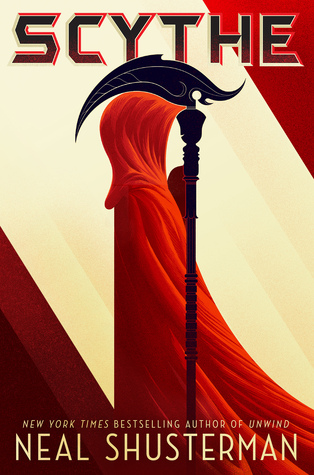
With the help of the Thunderhead, death, disease, and hunger have been conquered. However, overpopulation is now an issue. As a result, the Scythedom was created. Although reluctant, Citra and Rowan are chosen to be apprentices by Scythe Faraday of the old order, but only one of them will ultimately be selected to serve as a scythe by the council. When Scythe Goddard and his disciples push the boundaries with new age ideas and force Citra and Rowan into an unwelcome "win or be gleaned" situation, the entire human race is put at risk. A twist at the end saves these 16-year-old lives and positions them to fight corruption within the system.
This is the first Neal Shusterman novel that I've ever read, and I enjoyed it immensely. Scythe is a soft science fiction young adult novel that I would classify as dystopian. The post-mortal society is based in 2042. Shades of our current culture/ideas can be seen within the pages of this book, which makes it relatable and therefore, a bit disturbing. There were numerous biblical allusions throughout, such as the
Scythe Commandments (Ten Commandments), living modestly off the goodwill of others (Paul on his missionary journeys), fasting once a year to ponder the commandments,
Scythe Goddard's words on pg 75 (Satan trying to take God's position), Goddard pruning branches (Jesus is the vine, we are the branches), Goddard masquerading as light (Satan), and the Thunderhead replying, "I am" to Citra (God). This book will bring many philosophical questions to the reader's mind such as "Where do we go after we die?" and "What makes us human?" The book reminded me of Twilight which has good vampires and bad; in Scythe there are good scythes as well as bad...but in both books, all must kill. I found myself forming theories of how the situation would turn out at the end with Citra and Rowan, but the actual ending surprised me nonetheless. I have to say that I was quite excited to find out that Scythe is the first book in a series. I will definitely be reading Thunderhead and waiting with anticipation for the third book to be written and released.
Author, Neal Shusterman's website: http://www.storyman.com/
The sequel, Thunderhead:

If you like Scythe, you may enjoy the Twilight series (more mature content):
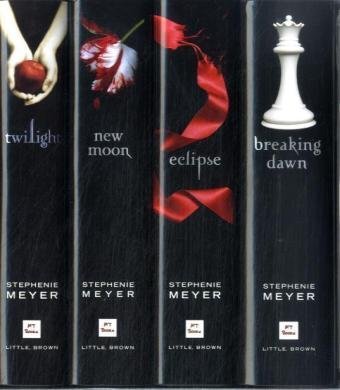
🕮🕮🕮🕮🕮🕮🕮🕮🕮🕮🕮🕮🕮🕮🕮🕮🕮🕮🕮🕮🕮🕮🕮🕮🕮🕮🕮🕮🕮🕮🕮🕮🕮🕮🕮🕮🕮
The Serpent King
William C. Morris Award Winner (2017)
by Jeff Zentner
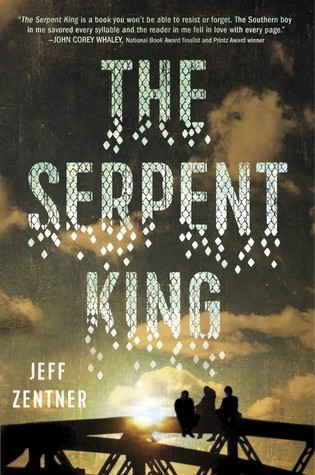
Dillard Early ("Dill") cannot escape the negative connotations of his name in his small hometown of Forrestville. He was named after his father, a snake-handling, poison-drinking preacher serving time for possession of pornographic pictures of a minor. The kids at school bully him because of his father's sins. Both of his parents blame him for his dad's imprisonment and their related financial woes, even though he is blameless. Dill's only solace comes from time spent with his two friends, Lydia and Travis. With Travis's shocking death, Lydia's plan to attend NYU, and his parents' refusal to entertain the idea of Dill attending college, he becomes severely depressed. Thankfully, he reaches out to Lydia before making an irreversible decision to end his life. With the help of Lydia and her supportive parents, Dill finds hope and a promising future.
This realistic fiction young adult novel had some heavy subject matter in it, like Travis' abuse by his father. However, it was told in a very realistic manner that did not feel forced or overly played. As a result, it conveyed a message of hope and possibility which will likely inspire its readers to explore their own dreams for their future. There were a number of things that particularly stood out to me. For one, I loved how books were used as a method of escape. Travis read fantasy books in order to escape his grief due to the loss of his brother, Matt. Mr. Burson “made books his life because they let him escape this world of cruelty and savagery." These characters reminded me of how books are so often used as an escape from reality. In addition, I thought it was creative of the author to use a train as a metaphor for a serpent, since snakes were a major motif in this novel. The Serpent King should cause readers to examine stereotypes that they might have, as there were certainly numerous ones conveyed about Pentecostal Christians throughout. It’s interesting to note that Dill's parents believed God could do anything with enough faith, but in reality, they put Him in a box and masked it with piety. Dill went through a number of changes within this novel. Most notable was the change in his relationship with his parents as he moved from the conventional to post-conventional stage of moral development.
Author, Jeff Zentner's website: http://www.jeffzentnerbooks.com/
Book trailer:
🕮🕮🕮🕮🕮🕮🕮🕮🕮🕮🕮🕮🕮🕮🕮🕮🕮🕮🕮🕮🕮🕮🕮🕮🕮🕮🕮🕮🕮🕮🕮🕮🕮🕮🕮🕮🕮
The Knife of Never Letting Go
Required Young Adult Novel
by Patrick Ness

In Prentisstown, everyone can hear one another's thoughts, there are no females, and when a boy reaches the age of 13, he is deemed a man. Todd Hewitt, the last remaining boy in town, is quickly approaching his special day. But, at the direction of his caretakers, he flees before it occurs. As Todd runs away from Mayor Prentiss and his band of evil pursuers, he meets a mysterious, silent girl...the first female he's ever encountered. As they journey towards promised safety in Haven, they repeatedly escape Prentisstown's building army, and Todd discovers his true self while learning that most of what he's been taught throughout his life was a lie.
This is a fantasy fiction novel which I'd classify as soft science fiction because there is more emphasis on the story, plot, and characters than on science. Even though the setting of the story is New World, this planet is very similar to Earth. Even the aliens of the planet, the Spackle, are a metaphor for our own Native Americans, as they are killed off or displaced by the new settlers who feel threatened by them and want their land. It was interesting to see the development of Todd and Viola's relationship as Todd discovered how to connect with her through silence. I thought it was especially touching when at the end of Chapter 38, Todd is able to read Viola's thoughts without hearing them. The scene was beautiful; really moving. There were multiple biblical allusions throughout the novel. On page 402, Viola refers to Ben as a Christ-figure when she tells Todd, "The point is he cared enough about you to maybe sacrifice himself and if you just give up, then you're saying that the sacrifice is worth nothing!" In addition, Haven is referred to as a place of hope and refuge, much like heaven. This young adult novel is a classic good versus evil story where corruption originates within and men do not want to be the only ones guilty of sin. Unfortunately, the book ends with a cliff-hanger, an abrupt ending with no resolution. Ugghh! I suppose that this will encourage readers to continue on to the second book in Ness' Chaos Walking series to find out what happens next.
Author, Patrick Ness' website: https://patrickness.com/
The Chaos Walking series:
Movie trailer (Be sure to read the book first!):
🕮🕮🕮🕮🕮🕮🕮🕮🕮🕮🕮🕮🕮🕮🕮🕮🕮🕮🕮🕮🕮🕮🕮🕮🕮🕮🕮🕮🕮🕮🕮🕮🕮🕮🕮🕮🕮
The Waters & the Wild
Required Young Adult Author
by Francesca Lia Block

It's normal for 13 year-olds to feel lonely and as though they don't fit in. What's not so normal is seeing a doppelganger in the middle of the night and longing to eat handfuls of dirt. As Bee seeks to discover the meaning of her unusual encounters with her other self, she befriends Haze, who believes he is an alien, and Sarah, who thinks she is a reincarnated slave girl. All of their lives change drastically as a result of Bee's drawing-them-together before she trades places with her fetch, returning to where she really belongs.
Francesca Lia Block's fantasy fiction writing has a poetic feeling to it. It contains short chapters which reveal little bits about Bee's life and is a very quick read, only consisting of 113 pages. In fact, it reads as more of a short story than a novel. Young adult readers will lose themselves while trying to determine what is real and what is not. Overall, I thought it was a unique, but strange, piece of fantasy fiction that will haunt the reader's thoughts long after they finish the last page.
Author's website: http://www.francescaliablock.com/
Author, Francesca Lia Block, reads from the book:
🕮🕮🕮🕮🕮🕮🕮🕮🕮🕮🕮🕮🕮🕮🕮🕮🕮🕮🕮🕮🕮🕮🕮🕮🕮🕮🕮🕮🕮🕮🕮🕮🕮🕮🕮🕮🕮
When You Reach Me
Required Young Adult Author
by Rebecca Stead
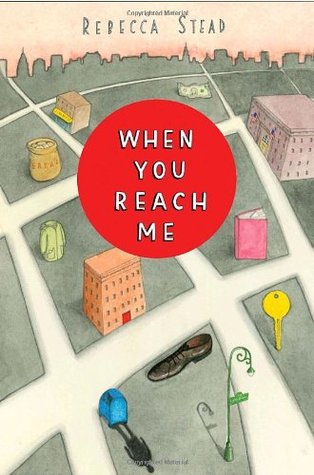
Miranda is a 12 year-old latch-key kid whose favorite book is A Wrinkle in Time. She lives with her mother and is helping her prepare to be a contestant on $20,000 Pyramid. She befriends Annemarie, Colin, and Marcus after her best and previously only friend, Sal, stops talking to her. Her world is rocked when she starts receiving mysterious notes in unusual places regarding future events that actually occur. Miranda must decide if she will follow the mysterious writer's instructions by keeping the notes secret and by writing a detailed letter back even though she is scared. It might save multiple lives!
Coincidentally, I went to see A Wrinkle in Time at the movie theater the day after I started reading this book. So it was exciting to discover that Miranda's favorite book in this novel was A Wrinkle in Time. After reading L'Engle's book and viewing the movie, I was familiar with all of the scenes mentioned in When You Reach Me and, therefore, suspected quickly that time travel might be involved in this book and relate to the mysterious notes that were left for Miranda. However, the book was a mind puzzle, nonetheless. It was an easy read, and a fun read because I was constantly trying to figure out who the letters were coming from and whose life needed to be saved. I thought the quote by Miranda's mother on page 85 was impactful, "A lot of people make bad mistakes. But being in jail can make them feel like a mistake is all they are." I hope that tween and teen readers will take this message to heart and realize that a mistake or bad choice does not define them. In addition, the parallel drawn between Miranda/Sal's friendship loss and that of Julia/Annemarie, should help readers develop empathy for others and move to a more abstract understanding of relationships. This situation illustrates well the life lesson that people assume many things regarding the actions of others which likely aren't true. The only thing that made me a bit uncomfortable with this book for a younger audience was how it encouraged Miranda to keep a potentially dangerous situation secret from her mom. Young adults should be mature enough to realize that this is a fiction novel and be able to discern when to involve their parents in various real-life situations, and I think that the time period in which this book was set is different than our current times. Kids were left to their own devices much earlier in the past than they are now. In fact, after watching Stead's Q & A video below, I realized that this was one of the points of the story. However, for readers who are less mature, it would be wise to discuss the dangers of keeping secrets from parents with them.
Author, Rebecca Stead's website: http://www.rebeccasteadbooks.com/index2.html
When You Reach Me won the John Newbery Medal in 2010.

A Q&A with Rebecca Stead about writing and her book:
Deadline
Required Young Adult Author
by Chris Crutcher

Ben Wolf is not a typical senior. Rather than coast through his last year of high school, he wants to push the limits by reading everything possible, challenging his teachers, winning state in cross country, and stealing Dallas Suzuki's heart. But after discovering he has a terminal illness with only a year to live, his plans change. Now, he just wants normal. In order to achieve that, he decides to keep his diagnosis a secret from everyone. This seems like a good idea at first...until Dallas shares her deepest secret with him, he connects with his brother, Cody, over football, and he becomes concerned with how his death will affect his Mom and Dad.
Deadline is a realistic fiction young adult novel which initiates reflection on the important things in life, such as relationships. As Ben struggles with his personal desire for a normal last year of life versus meeting the needs of those he loves, he experiences great maturity as he moves from selfish to global thinking. During his final months, Ben also realizes how to make every moment count by helping to better the lives of others, a lesson that all humanity could stand to learn. Crutcher's references to Jesus as Hey-Soos within Ben's dream discussions are clever and make it possible for readers who are turned off by God or religion to consider Jesus as a counselor. The inclusion of Dallas as a teen mother and Rudy as a sex offender raise philosophical questions and help young adults to mature as they witness Crutcher's development of these characters as whole people who are more than the sum of their parts. The end of this novel made me cry and realize how precious, and short, life is...whether 18 years long or 100.
Author, Chris Crutcher's website: http://www.chriscrutcher.com/
Book trailer:
An interview with Chris Crutcher on Deadline:
🕮🕮🕮🕮🕮🕮🕮🕮🕮🕮🕮🕮🕮🕮🕮🕮🕮🕮🕮🕮🕮🕮🕮🕮🕮🕮🕮🕮🕮🕮🕮🕮🕮🕮🕮🕮🕮
Paper Towns
Required Young Adult Author
by John Green
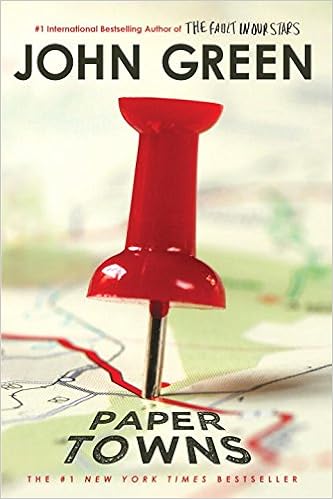
Quentin Jacobsen and Margo Roth Spiegelman are next door neighbors who met at the age of two. Best of friends, actually, until one day at the park when they stumble upon a dead body slumped against a tree. From that point on, Margo shuts Q out, and he has to admire her from afar. Then, one unexpected night during his senior year, Margo appears at his window and convinces him to take part in a series of revengeful, but adventurous, events with her. After their exciting night together, Q hopes that they will reconnect...but Margo seemingly disappears. Distraught, Q discovers clues to her whereabouts and refuses to give up the search until Margo is found, dead or alive. In the process, he comes to discover the real Margo, one he never realized existed.
Paper Towns is a realistic fiction novel in mystery form. John Green did his research in creating this story for young adults and introduces three variations on the meaning of paper town in order to keep the reader guessing. I have to admit that I fully expected the story to turn out similar to his award-winning novel, Looking for Alaska. So, I was pleasantly surprised when it did not. The hour-by-hour commentary of the road trip to find Margo near the end of the book was laugh-out-loud funny in multiple places. But, at its core, this narrative causes deep thinking about who people really are versus who they portray themselves to be. It was interesting that Margo had to disappear (physically) in order to be found (personally). Paper Towns encourages readers to be authentic with one another and to allow others the freedom to be more than the surface image they may portray.
Author, John Green's website: http://www.johngreenbooks.com/
Follow John Green on Twitter: @johngreen
Other books by John Green that you might enjoy:


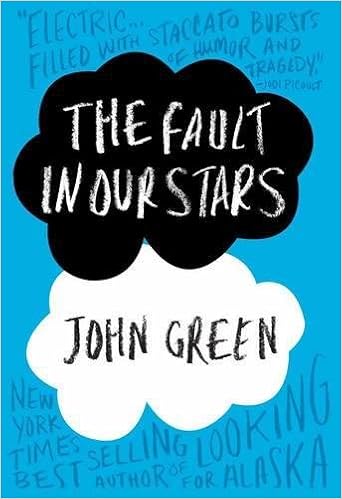

🕮🕮🕮🕮🕮🕮🕮🕮🕮🕮🕮🕮🕮🕮🕮🕮🕮🕮🕮🕮🕮🕮🕮🕮🕮🕮🕮🕮🕮🕮🕮🕮🕮🕮🕮🕮🕮
Solo
Required Young Adult Author
by Kwame Alexander

Blade is the son of rock star and drug addict, Rutherford Morrison, and desperately wants to escape the reputation of his father. Blade finds solace in his girlfriend, Chapel, but must sneak around to see her since her parents assume that he is a chip off the old block and forbid any interaction between them. Things come to a head when they are caught together and after Storm, Blade's sister, reveals during a fit of anger that Blade is adopted. With nothing left to hold onto, Blade goes to Ghana in search of his birth mother. While there, Blade discovers that the world is larger than the California home he's always known and finds love beyond his expectations.
Kwame Alexander does it again in his 2017 realistic fiction novel, Solo, for young adults! In his modern and rhythmic style, he tells the story of Blade in a series of poems, text messages, and song lyrics. Alexander's poetry is not boring in the least. In fact, it was easy to forget that I was even reading in verse. The way Alexander develops his characters and story line with so few words when compared to a traditional novel is unbelievable. The entire Morrison family is engrossed in rock-and-roll music, so the book also contains references to music artists and classic rock songs, as well as original music by Blade. In addition, the story line is incredible. It's about music, love, and the desire to be wanted. The way Alexander transitions the setting from the superficial world of stardom in Hollywood to the rural village in west Africa is brilliant. Add in the resolution of broken relationships, and you've got an amazing novel that you won't be able to put down.
Author, Kwame Alexander's website: http://kwamealexander.com/
Kwame Alexander on Writing Solo:
"Excuse Me" from Solo, performed by Randy Preston:
🕮🕮🕮🕮🕮🕮🕮🕮🕮🕮🕮🕮🕮🕮🕮🕮🕮🕮🕮🕮🕮🕮🕮🕮🕮🕮🕮🕮🕮🕮🕮🕮🕮🕮🕮🕮🕮
Monster
Required Young Adult Novel
by Walter Dean Myers

Steve Harmon is only sixteen years old, but he is in juvenile detention and on trial for a robbery that resulted in a death. Did Steve act as a lookout in the robbery, did he participate, or was he not involved at all? If he is found guilty, he may spend the rest of his life in prison. As the trial unfolds, various witnesses are called and conflicting stories are shared. Even though he is absolved of the crime in the end, it is clear that his attorney is not completely sure of his innocence.
Monster is written as a first-person narrative from Steve's perspective. As a budding movie director, Steve records his story as a screenplay, with periodic journal entries which reveal that he sometimes views himself as a monster, as the prosecuting attorney labels him. The style of writing and flashbacks made this realistic fiction novel unique, but a bit difficult to follow. In addition, I thought it was hard to keep track of the characters; I suggest keeping a list with a brief description of each as they are introduced. As the trial proceeds, the reader begins to understand how one decision can alter a life and have long-term results. Although Walter Dean Myers reveals the result of the trial, I did not feel like he was definitive in expressing whether or not Steve was actually guilty or innocent, and I think he did this intentionally. The book will leave you thinking about how to make wise decisions, whether Steve was guilty or innocent, and will allow for its readers to debate their stance using details from the story.
Author, Walter Dean Myers' website: http://walterdeanmyers.net/
Myers discusses his book:
🕮🕮🕮🕮🕮🕮🕮🕮🕮🕮🕮🕮🕮🕮🕮🕮🕮🕮🕮🕮🕮🕮🕮🕮🕮🕮🕮🕮🕮🕮🕮🕮🕮🕮🕮🕮🕮